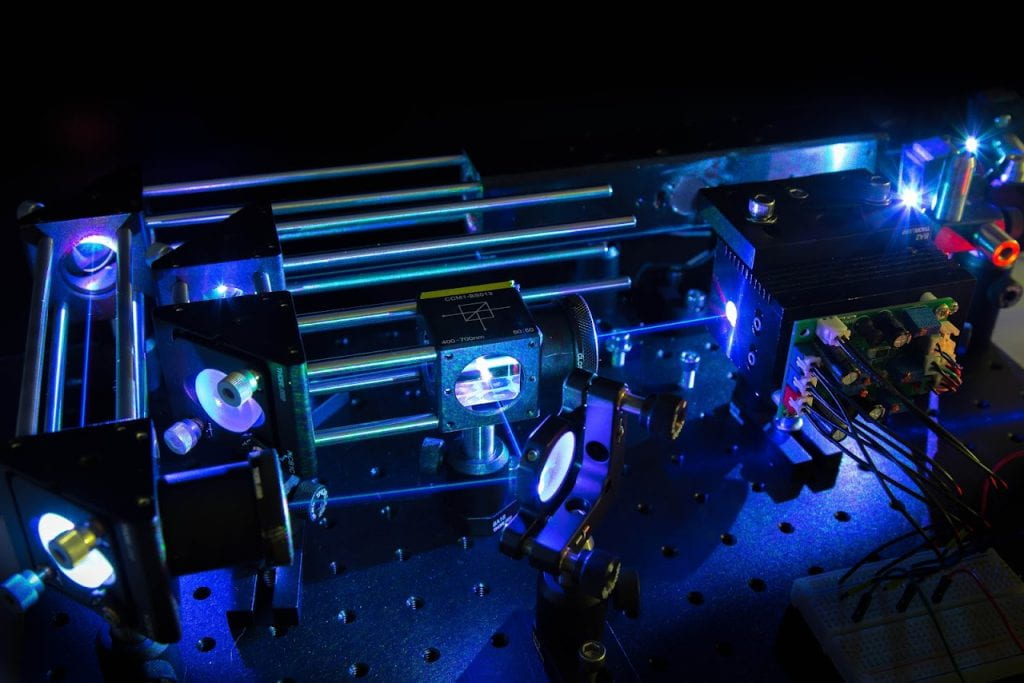Ultra-Sensitive Integrated Photoacoustic-Nephelometer Spectrometer
Photoacoustic spectroscopy is a widespread and practical tool for trace detection and characterization of all phases of matter. The photoacoustic effect for aerosols involves absorption of light by the particle resulting in a temperature increase of the particle. Heat transfers by conduction from the particle to the surrounding air, expanding the air, and creating a pressure disturbance or sound wave. Volumetric expansion of the heated particle is negligible compared to that of the surrounding air. This conversion of light into sound is known as the photoacoustic effect. A microphone is used to quantify the sound wave. Aerosol light absorption can be quantitatively determined by use of a calibrated laser power meter and microphone, as long as all the heat exits the particle to the surrounding air during the acoustic cycle. Particle temperature increase is typically less than 1 K for typical aerosol size and laser power used in photoacoustic

Dr. Chakrabarty’s group is currently custom manufacturing a patent-pending, multi-wavelength single-pass, dual-cell integrated-photoacoustic-nephelometer (IPN) to measure real-time, spectrally-varying values of aerosol light absorption and scattering. This parallel measurement of sample flow and an aerosol-free background is the primary signal-to-noise ratio improvement feature. While other dual-cell approaches have been proposed before, only Dr. Chakrabarty’s approach utilizes two independently-calibrated optoacoustic resonators with integrated nephelometers and extinctiometers. This approach reduces all interfering phenomena (electrical and acoustic noise, absorbing gaseous species, etc.) to common-mode noise which is removed upon combining measurements. This instrument is expected to be deployed during future airborne field campaigns.
Asymmetry Parameter Monitor
The particle asymmetry parameter g is a key input in climate models to determine the net radiative forcing effects of aerosols. This parameter defines the scattering directionality of aerosols and needs to be tightly constrained in climate models. Currently, there exists no real-time and portable instrument to measure this parameter in field studies. Dr. Chakrabarty and his group have developed a portable light scattering (PLS) device capable of determining this parameter. With an integration time less than 1 second, the device is capable of in situ, real-time, and contact-free measurements of the particles phase function from 0.7 to 162 degrees simultaneously. The g is obtained by integrating the phase function with the cosine operator over scattering angles. Compared to commercially available nephelometers, the smallest angle Dr. Chakrabarty’s PLS device can measure is one order of magnitude smaller, which allows for accurate determination of g, especially for carbonaceous and mineral dust aerosol.

- Kumar, J., Paik, T., Shetty, N. J., Sheridan, P., Aiken, A. C., Dubey, M. K., & Chakrabarty, R. K. (2022). Correcting for filter-based aerosol light absorption biases at the Atmospheric Radiation Measurement program’s Southern Great Plains site using photoacoustic measurements and machine learning. Atmospheric Measurement Techniques, 15(15), 4569-4583.